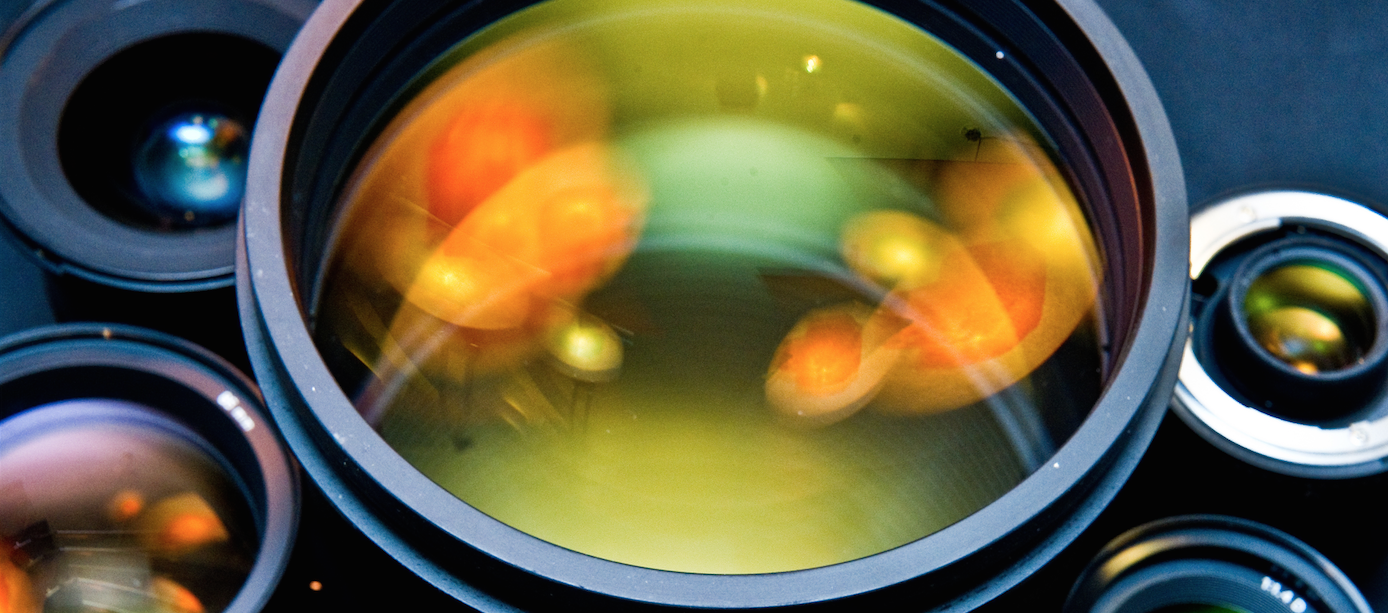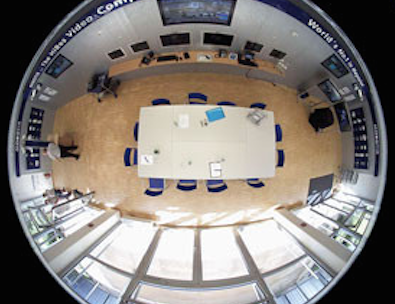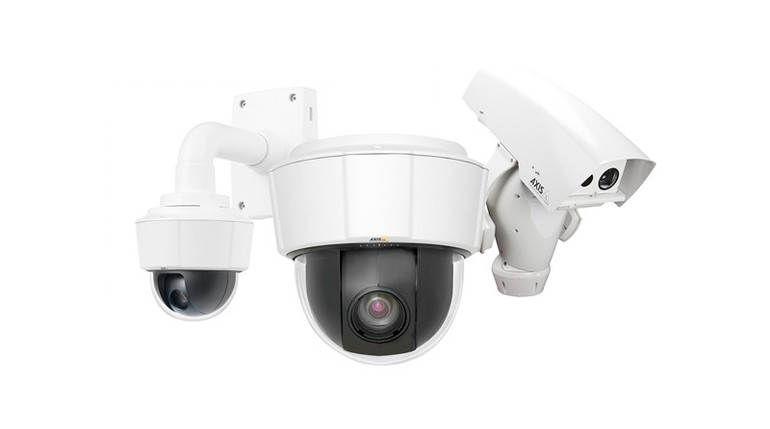The different types of lenses and their various parts.
The lens of an IP camera is easily one of the most important parts of the camera. After all, the lens is responsible for determining the field of view, controlling the amount of light that reaches the image sensor, and focusing the camera for clear images. While it’s easy to assume that IP camera lenses are “one size fits all” there are actually different lenses for different applications. We will be breaking down these differences to help you find the IP camera solution to fit your surveillance requirements.

Types of lenses
There are three main types of lenses:
- Fixed: A fixed lens, as the name suggests, has a fixed focal length, which basically means it offers only one field of view (either normal, telephoto, or wide angle)/li>
- Varifocal: A varifocal lens has a range of focal lengths, so it offers multiple fields of view. The field of view can be manually adjusted, but users then have to manually refocus the lens.
- Zoom: Similar to a varifocal lens, a zoom lens has a range of focal lengths and fields of view. However, the lens does not need to be manually refocused if the field of view is changed because the focus can be maintained with a range of focal lengths.

Changing the lens
Some IP cameras offer the option of exchangeable lenses. If you’re looking to swap out a lens, it is important to make sure the lens and the image sensor match.
For example, a lens designed for a 1/2” image sensor will fit a 1/2”, 1/3”, and 1/4” image sensor, but would not work with a 2/3” image sensor.
If a lens is designed for a smaller image sensor, the image will have black corners. If a lens is made for a larger image sensor, the field of view will be smaller than what the lens is capable of capturing, which results in some of the image being “lost” outside the image sensor.
When changing a lens, it is also important to know what type of lens mount the IP camera has. There are two mount standards used with IP cameras: C-mount and CS-mount.
A C-mount will have a distance of 12.5mm between the image sensor and the lens while a CS-mount has a distance of approximately 17.5mm.
You can mount a C-mount lens to a CS-mount camera with the help of a 5.0mm space (C/CS adapter ring), but this can lead to focusing issues (generally, if you can’t focus the camera it means you’re using the wrong lens).

Field of view
The field of view of an IP camera refers to how much of a scene is captured in the final image and the degree of detail in which it is captured. The field of view is determined by the focal length of the lens and the size of the image sensor.
How is the focal length determined? It is calculated by taking two things into consideration: the distance between the entrance of the lens and the point where all the light rays converge (usually the camera’s image sensor). Basically, the longer the focal length of the lens, the narrower the field of view.
When trying to determine what focal length is required for a specific field of view, it is easiest to use a rotating lens calculator or an online calculator. You will need to know the size of the camera’s image sensor (usually 1/4”, 1/3”, 1/2”, or 2/3”) in order to get an accurate result. However, these calculations do not account for any potential geometric distortions.
Types of Field of View
There are three types of field of view:
- Normal: This view provides the same field of view as the human eye.
- Telephoto: This is a narrower field of view that offers finer details than the human eye can perceive. Typically, a telephoto lens is used when an object is either small or located far from the camera. A telephoto lens will usually have less light gathering capability compared to a normal lens.
- Wide angle: The opposite of telephoto, this offers a large field of view with less detail than normal view. Generally, wide angle provides great depth of field and an okay low-light performance. However, wide angle is prone to geometric distortions like the “fish-eye” effect.

Fixed vs. adjustable iris
The job of an iris on an IP camera is to maintain the best light level for the image sensor to capture clear, sharp, and properly exposed images. The iris can also control the depth of field. There are two types of iris control: fixed and adjustable. Adjustable Iris lenses can be manual or automatic (auto iris and P-iris).
Depth of field
The depth of field of an IP camera refers to the distance in front of and beyond the point of focus where all the objects appear in the same sharp clarity. The depth of field is affected by three things: iris diameter, focal length, and distance of the subject from the camera.
A long focal length, a large iris opening, or a short distance between the camera and subject can affect and limit the depth of field.
F-number
The f-number (also known as an f-stop) of an IP camera determines how much light is allowed to pass through the lens. This is an important factor to consider if you will be using the camera in low-light situations—particularly indoors.
How is the f-number determined? Basically, f-number = focal length/aperture.
The f-number is written as F/x (the slash indicates division). An F/4, for example, means the diameter of the iris is equal to the focal length divided by 4. If we say the camera has an 8mm lens that means light has to pass through an iris opening of 2mm in diameter.
The smaller the f-number, the more light is allowed to pass through the lens to the image sensor. For low-light situations a lower f-number is ideal as it will generally result in better image quality. Meanwhile, a higher f-number in a low-light situation will create a greater depth of field.
Typically, a lens with a lower f-number is more expensive than a lens with a higher f-number.

Q) Which lens is best?
A) Depends on where you’re putting the camera and what you are hoping to achieve.
Similar to IP cameras themselves, lenses are tailored to meet the needs of users and there is no one lens that can do it all. Whether you’re shopping around for IP cameras or looking to just change out a lens, it is always important to assess what kind of performance you expect from your camera before anything else.
For example…
In a retail environment with a high ceiling, such as a grocery store, you’ll likely find cameras hanging from the rafters. If the cameras have a wide field of view, they can cover an incredibly large area, which is much more advantageous than having one camera per aisle, per cash register or other costly camera arrangements. IP cameras have the capability (may not be available on all models) to zoom in on several individual regions of the picture simultaneously, creating the effect of having multiple cameras deployed rather than just one.
For more information about IP cameras, check out our “ IP Camera Image Sensor Guide” blog, or our series “The Benefits of IP Surveillance Cameras” part one and part two.
Blog article contributed by a member of the IP Phone Warehouse community.

